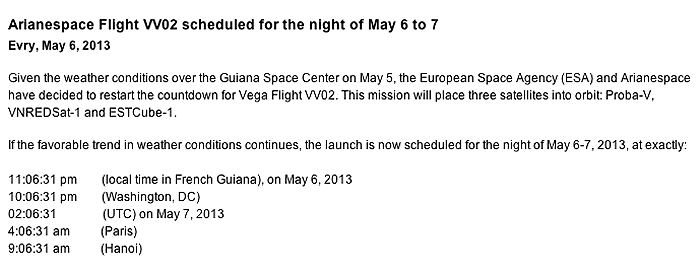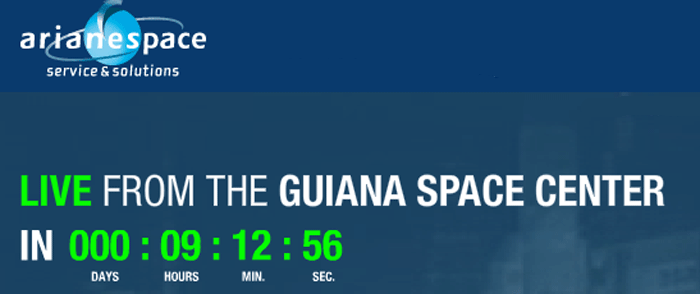.17.04.2013

.
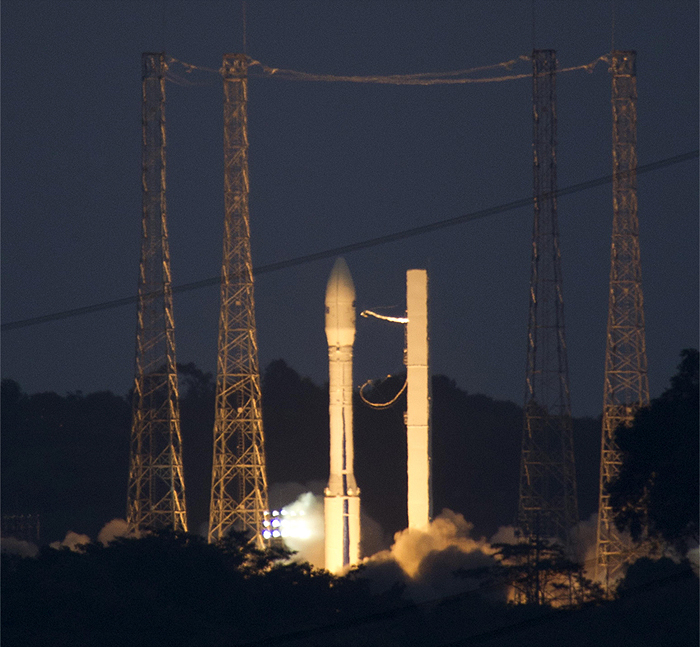
.
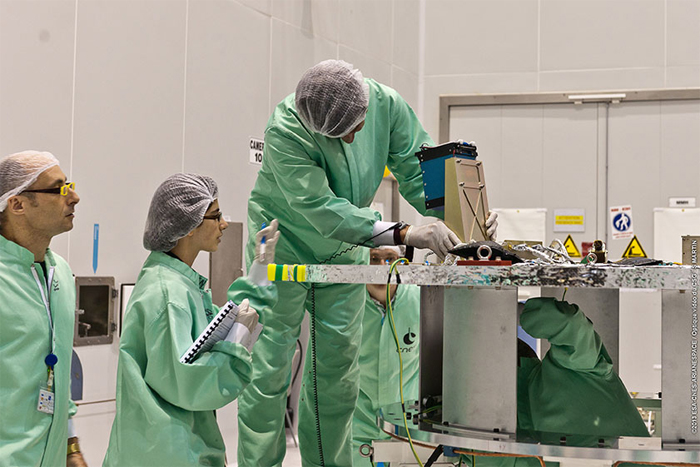
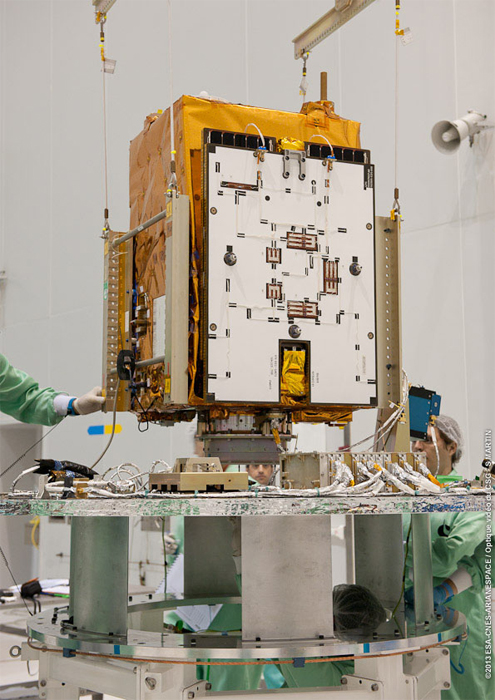
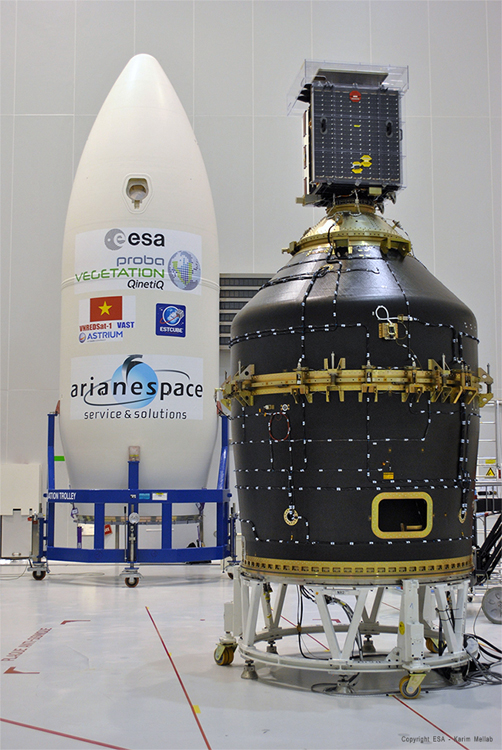
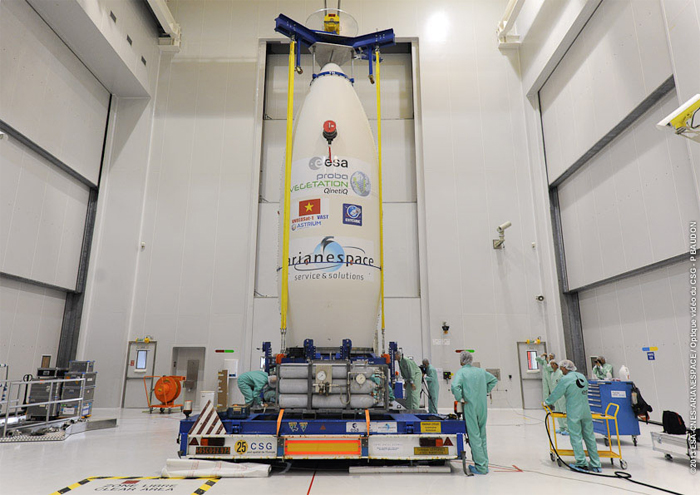
ESA’s Vega VV02 rocket is now fully assembled on its launch pad, 22 April, 2013. Final preparations are in full swing for the rocket’s flight.
Vega VV02 is the first of the five flights scheduled in ESA’s Vega Research and Technology Accompaniment – VERTA – programme, which aims to demonstrate the flexibility of the launch system. At a minimum rate of two launches per year, the programme will allow the smooth introduction of Vega for commercial exploitation.
VV02 will loft Proba-V, the first of four ESA missions, into space. Proba-V carries a reduced version of the Vegetation instrument currently flying on the Spot satellites to provide a daily overview of global vegetation growth.
This first VERTA flight will also demonstrate Vega's capability to launch multiple payloads. The second payload is the Vietnam Natural Resources, Environment and Disaster Monitoring Satellite (VNREDSAT) built by Astrium for the Vietnamese government.
Vega VV02 is scheduled for liftoff from the Spaceport on 4 May, 2013 (GMT).
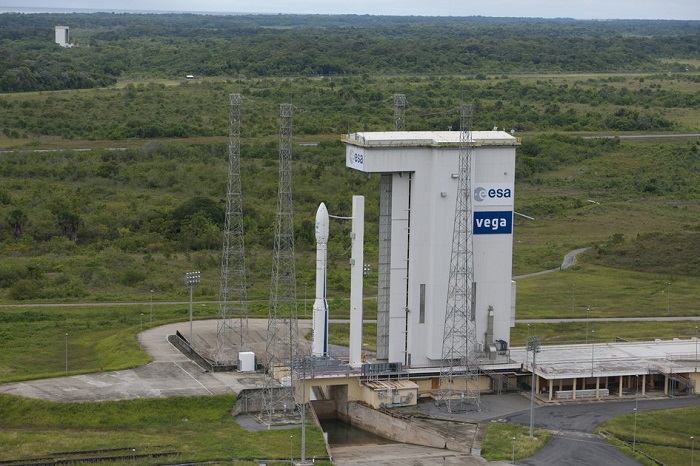
.Update: 3.05.2013


The VV02 mission’s three satellite passengers are encapsulated in the Vega payload fairing, which is shown in an aerial photo of the Spaceport’s SLV launch site (photo at left) and illustrated by the cutaway drawing at right.
.
The second Vega mission from French Guiana has been given its “green light” for liftoff tomorrow night, following completion of the launch readiness review earlier today at the Spaceport.

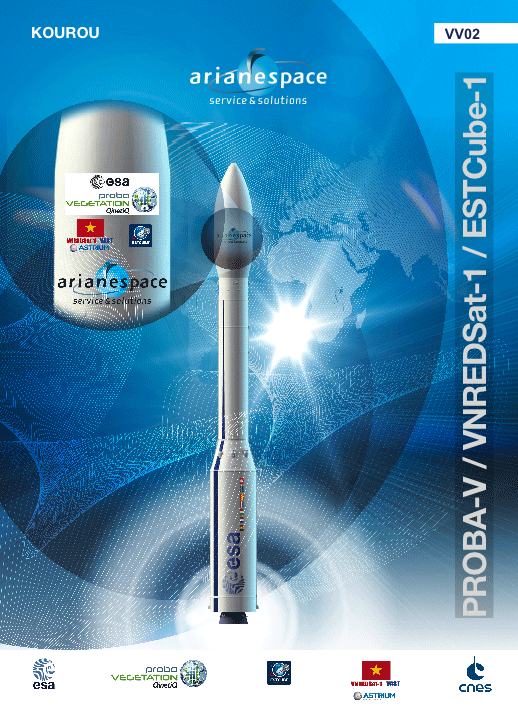
.
Update: 4.05.2013
.
Unfavorable high-altitude winds postpone Vega’s mission from the Spaceport with a trio of satellites
May 3, 2013 – Vega Flight VV02
|
|
High-altitude winds over the Spaceport in French Guiana have resulted in the decision by Arianespace and the European Space Agency to postpone tonight’s Vega mission with three satellite payloads.
This postponement was based on strict safety conditions applied for Arianespace launch operations. The Vega vehicle and its three spacecraft passengers – Proba-V, VNREDSat-1 and ESTCube-1 – remain in a safe, standby mode at the Spaceport’s SLV launch site.
A new launch date will be decided based on the evolution of the weather conditions.
The Proba-V passenger for this mission is a 160-kg. European Space Agency spacecraft, designed to map land cover and vegetation growth across the Earth every two days. Produced by prime contractor QinetiQ Space Belgium, it carries an advanced version of the Vegetation instrument.
VNREDSat-1 is a 120-kg. optical satellite for Vietnam, designed to support the country’s creation of an infrastructure to enable better studies of climate change effects, improving predictions for natural disasters and optimizing natural resource management. It was built by Astrium on behalf of the Vietnam Academy of Science and Technology (VAST).
Joining these two payloads is Estonia’s ESTCube-1 student nanosatellite, which will test electric solar wind sail technologies and help establish the basis infrastructure for future Estonian space projects. The 1.3-kg. cubesat was produced in a collaboration of students from the Estonian Aviation Academy, Tallinn University of Technology, Tartu University and the University of Life Sciences – and developed in conjunction with the Finnish Meteorological Institute and the German Space Center (DLR).
.
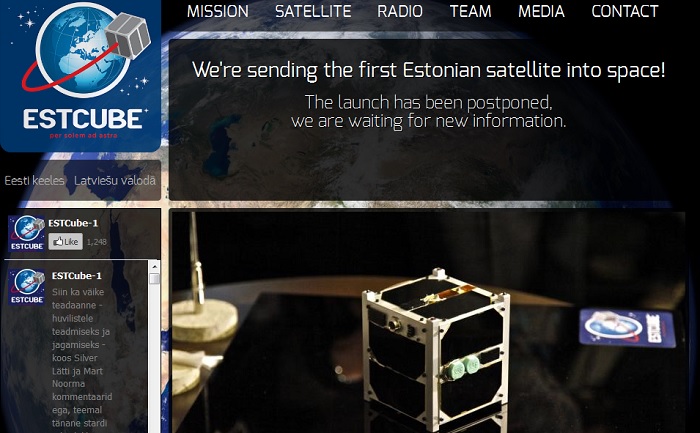
.
Update: 6.05.2013
.
